Employment – Summary of Department of Labor July Jobs Report
According to the United States Department of Labor June Jobs Report, the unemployment rate increased slightly to 5.9 percent which was above the consensus forecast of 5.8 percent June unemployment rate. The rise can be attributed to more people looking for better jobs where workers are “felling empowered” and therefore are quitting their jobs at a faster rate than in previous months. For instance, the number of people who became unemployed voluntarily rose by 164,000 to 942,000 in June. It is important to note that the rate is still well above the pre-pandemic level of 3.9 percent.
The restoration of 850,000 (the highest number jobs in the prior ten months) jobs is significant and beat the employment forecast of 750,000 for the month of June. Overall, the average monthly job growth over the past three months is approximately 567,000.
The Economic Policy (EPI) predicts that the current pace of job restoration/growth (as a result of lifting of more COVID-19 restrictions) will lower the unemployment rate to pre pandemic levels (4 percent or lower) by July 2022 with a full recovery by the end of 2022.
The US Bureau of Labor Statistics states that the notable job gains in June occurred in leisure and hospitality (+343,000) as pandemic-related restrictions continued to ease in some parts of the country; public (+230,000) and private education (+39,000); professional and business services (+72,000); retail trade (+67,000) and other services (+56,000). Nevertheless, nonfarm payroll employment is down by 6.8 million, or 4.4 percent, from its pre-pandemic February 2020 level.
Industries impacting the IAM show a slight net employment increase from the previous month in in transportation and warehousing (+10,700 for all employees and +7,300 for production and nonsupervisory workers).
Specifically, employment gains in warehousing and storage (+13, 600,), air transportation (+7,800), and truck transportation (+6,400) and rail transportation (+400). However, within the industry there were stagnant or negative employment losses including transit and ground passenger transportation (—100).
Overall, current employment for all workers in transportation and warehousing is approximately 5,729,500 which is 93,600 below its February 2020 level.
Manufacturing Employment

Employment for all employees in manufacturing increased slightly in June for all employees, +15,000 and by +30,000 for production and nonsupervisory employees.
Month to Month change in Manufacturing Employment
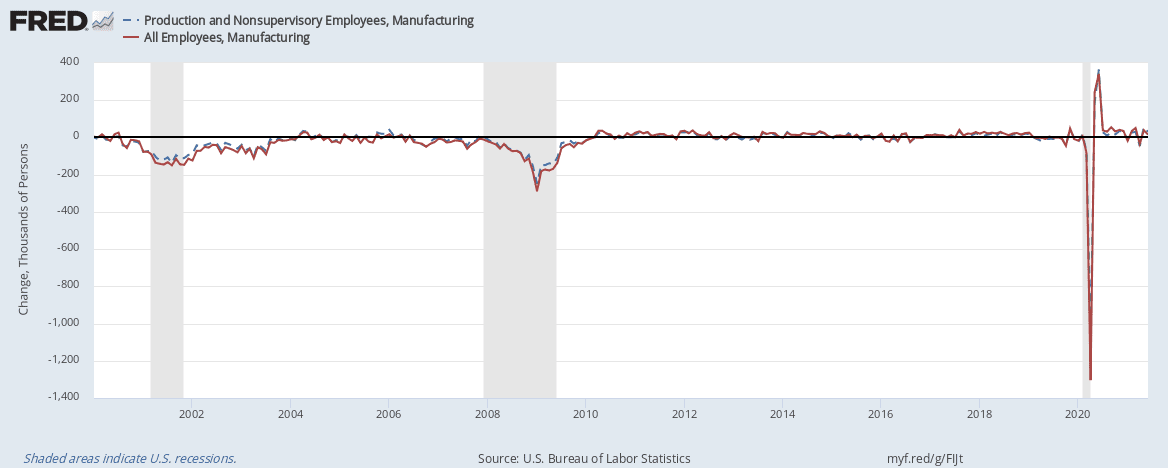
Durable Goods Employment
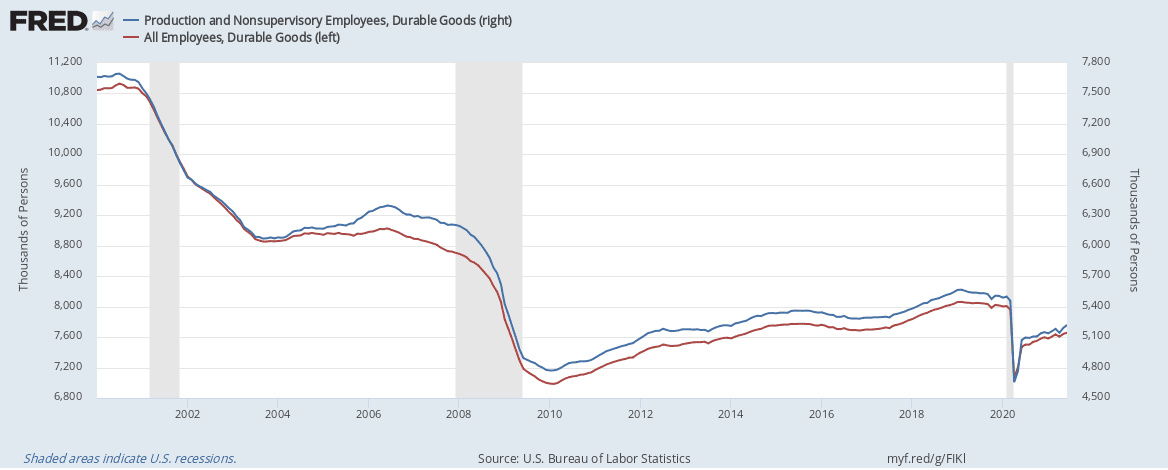
Month to Month change in Durable Goods Employment
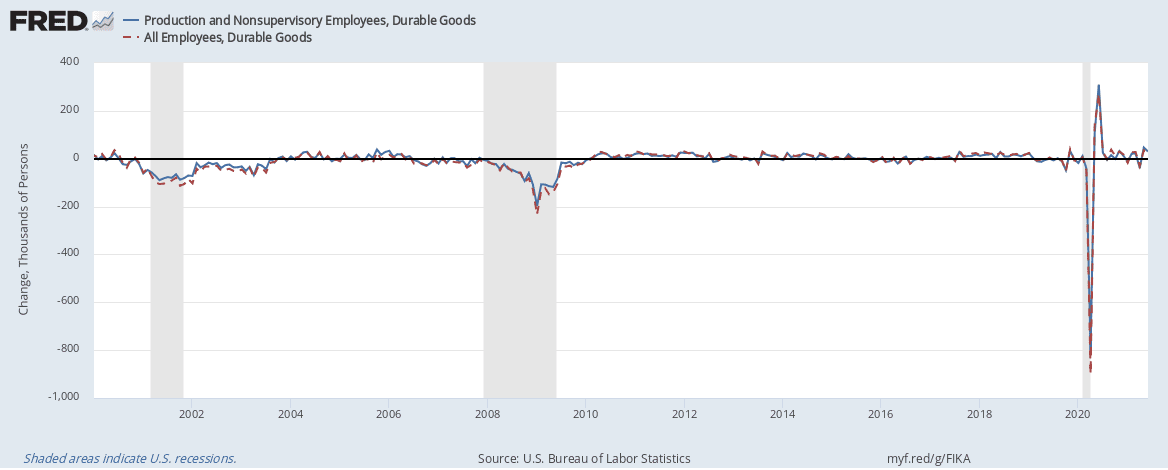
Job gains in durable goods such as fabricated metals (+5,700 all employees, +2,300 production and nonsupervisory workers),primary metals (+3,100 all employees and +4,700 for production and nonsupervisory workers) were offset by a loss in transportation equipment (-6,300 all employees and -1,700 production and nonsupervisory workers) Specifically, motor vehicles and parts saw loses by -12,300 all employees , and +12,500 production and nonsupervisory workers).
Other durable goods manufacturing sectors pertinent to the IAM saw mixed job growth include machinery (+300 all employees and +3,200 for production and nonsupervisory employees), and computer and electronic products (-1,400 all employees and +7,400 production and nonsupervisory workers).
Non-Durable goods producers lost -3,000 jobs for all employees and no change for production and nonsupervisory employees
Non-Durable Goods Employment
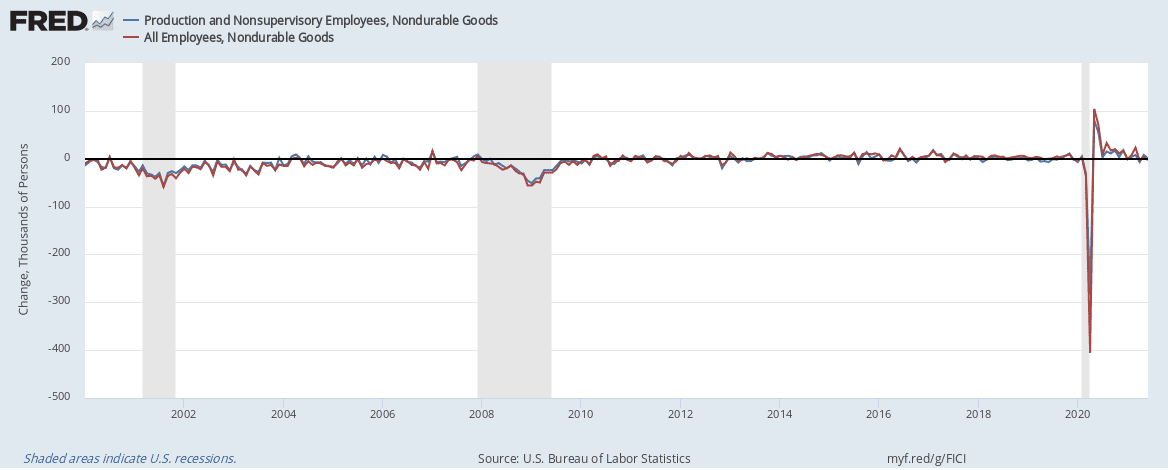
Month to Month change in Non-Durable Employment
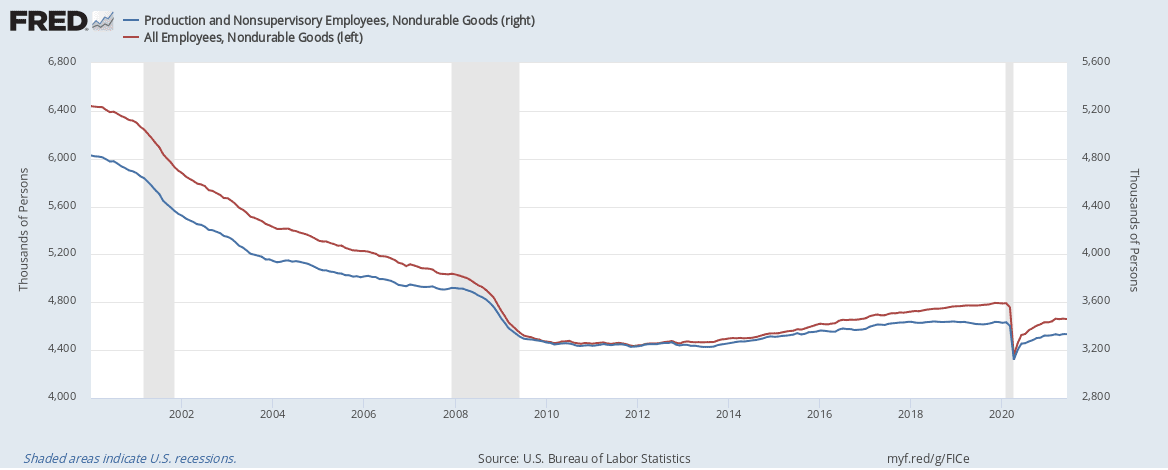
Within the nondurables sectors employment gains/losses were mixed. For instance, employment decreased workers in rubber and plastics (-2,900, and -200 production and nonsupervisory employees) and chemical manufacturing (+1,700, and -300 production and nonsupervisory employees), Petroleum and coal products employees saw a decrease by -1.000 employees (-1,900 for production and nonsupervisory workers).
Overall, data from the July employment report indicates that even though the economy is recovering the U.S. labor market has yet to recoup pre pandemic manufacturing jobs, a difference of 481,000. Nevertheless, the anticipated federal fiscal stimulus should fuel the speed of the job’s recovery reaching or exceeding its pre-pandemic level by the end of 2022.
The post Employment/Unemployment Summary July 2021 for the United States appeared first on IAMAW.
